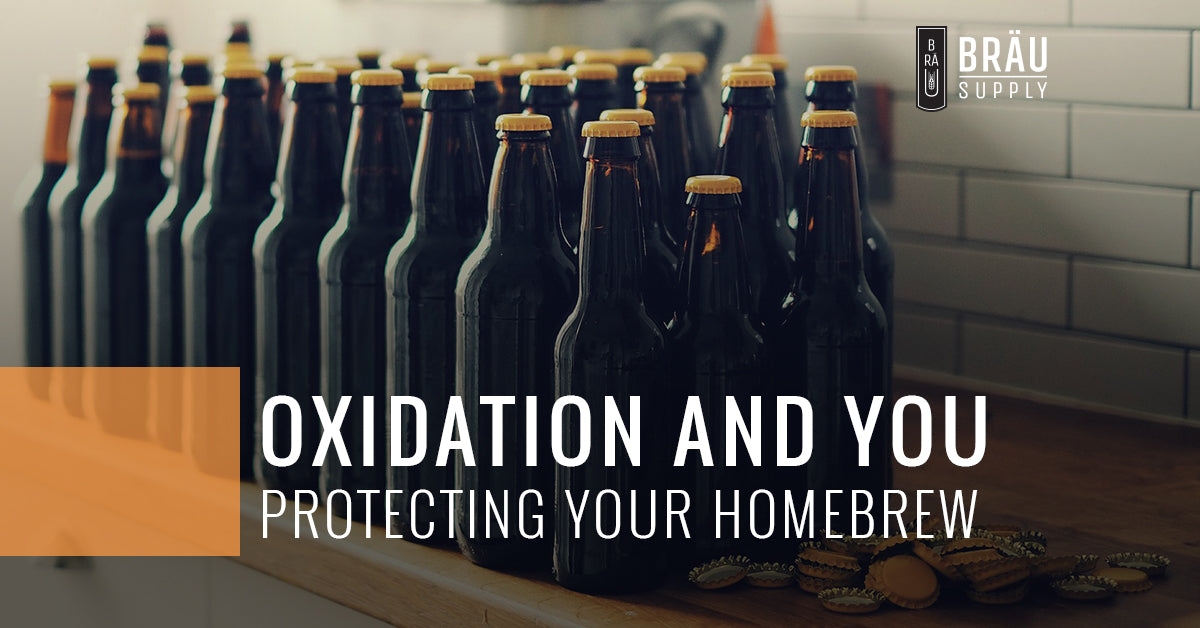Boxing weekend sale! Save up to $700! Shop now Our products ship tariff free

Oxidation And You: Protecting Your Homebrew
June 01, 2018 3 min read

Homebrewing, unfortunately, is a little more complicated than just heating up some ingredients and then enjoying your beer a few weeks later. There are factors and circumstances that can impact how your beer tastes that you don’t have to consider when you’re cooking or making other beverages like tea or coffee. One of these problems is oxidation. It’s something that many homebrewers don’t consider while making beer. In today’s blog, Bräu Supply will discuss what oxidation is, and how you can avoid it during your homebrewing endeavors.
So What Is Oxidation?
Let’s start with an example. Have you ever cut up an apple, and accidentally left a slice sitting out in the open for too long? The apple gets brown and stale. That’s oxidation in action. Oxidation occurs in your homebrew when too much oxygen is introduced into your wort. This leads to your beer tasting like a stack of wet cardboard.
But Didn’t Your Last Blog Say Oxygen Is Good For My Beer?
Well, yes and no. Your beer needs a certain amount of oxygen after you boil your beer and before you pitch your yeast. Your yeast needs oxygen to ferment properly. However, too much oxygen can be a bad thing.
When Does Oxidation Occur In Your Beer?
Oxidation is the silent and hidden enemy to homebrewers everywhere. The problem is that it can occur almost anywhere in the brewing process. It might occur while you’re stirring your mash, or it might occur as your filling a bomber up with beer. But the most common point in the process that oxidation occurs is when the beer is moved between carboys, into a bottling bucket, or into a vessel like a keg or a bottle.
How Do I Protect My Beer From Oxidation?
Fortunately, there are ways to limit the amount of oxygen that is introduced into your homebrew. For those who are filling kegs with their homebrew, they can purge their kegs of any oxygen by flushing the tank with CO2. This can be done before and after filling it with beer. Purging your keg of oxygen helps to keep your beer fresher longer.
Homebrewers who choose to bottle their beer have a more nuanced process to avoid oxidation. As you rack your beer into bottles, make sure to avoid splashing the beer or introducing air bubbles into the beer. To avoid this, we suggest using a bottling bucket and a properly fitted racking cane. Even if you are extremely careful in moving a bottling your beer, some oxygen will be introduced, but the leftover yeast in the beer itself will consume some of this. To further slow the oxidizing process, you can even use oxygen absorbing bottle caps. Finally, it’s extremely important that beer in all vessels be stored in a cool and dry place. This will slow the oxidizing process naturally.
Enjoy Your Beer Sooner Than Later
In general, homebrew beer should be enjoyed fresh and soon after it’s finished conditioning in your kegs or bottles. This is the easiest, and perhaps the most enjoyable way to ensure that your beer stays fresh, and doesn’t end up with that cardboardy, oxidized taste.
Of course, the other way to limit the effects of oxidation is by using an all-in-one brewing system like the UniBräu, which means there’s no need to move your beer between carboys and fermenters. Visit Bräu Supply to see all of our homebrew supplies.
More articles how to brew beer
The ultimate guide to Kveik yeast: Unleashing it's fermentation potential
Revolutionizing home brewing: The simplified art of no sparge brewing
Exploring amber ales: A guide with a twist on the traditional recipe
Mastering cold crashing: Enhancing beer clarity and accelerating the aging process
What is the basic function of the fermenter?
What causes a fermenter to heat up?
The art of lagering: A guide to perfecting the cold conditioning process
Troubleshooting fermentation problems in brewing: A comprehensive guide
Subscribe
Sign up to get the latest on sales, new releases and more …


